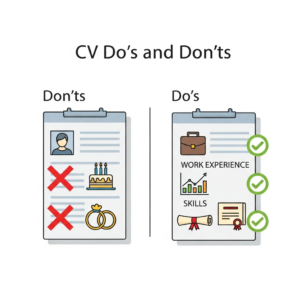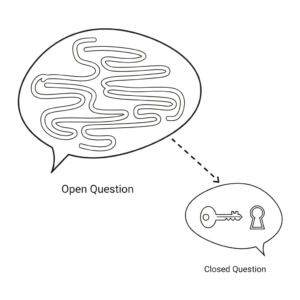Losing a job is never easy, and in today’s economic environment, redundancy is becoming more common. It’s frustrating, overwhelming, and uncertain, but it’s also a moment for reflection and growth.
If you’ve recently lost your job or feel that redundancy might be coming, you are not alone. The key is to stay proactive, take care of yourself, and make strategic moves for your next opportunity.
Having worked with many professionals navigating career changes, I know that job loss isn’t the end of your career—it’s a chance to rethink, rebuild, and come back stronger. Here’s how to take control of the situation and move forward.
💡 First Things First: Take a Breath & Talk to Someone
Redundancy brings a wave of emotions—from frustration to self-doubt. That’s completely normal. Before you jump into job hunting, give yourself time to process and talk to others.
✅ Reach out to friends and family – You don’t have to go through this alone. Let them know what you’re experiencing.
✅ Talk to a career coach or mentor – A professional can help you reframe your experience and create a job search strategy.
✅ Consider mental health support if needed – Job loss can affect confidence and well-being. Resources like Mental Health Ireland and career counseling services can provide guidance.
✅ Join support groups or networking communities – Surrounding yourself with positive and supportive people can make a huge difference.
📌 Pro Tip: Don’t be afraid to share your situation with your network. People are often willing to help if they know you’re looking for opportunities.
🎯 Step 1: Take Time to Think & Reset Your Career Goals
Before sending out applications, take time to reevaluate your career path.
✅ What did you like (or dislike) about your last job?
✅ Do you want to stay in the same industry or explore something new?
✅ What skills do you have that are valuable in today’s market?
✅ What trends are shaping your industry?
📌 Pro Tip: Sometimes redundancy pushes us toward a better path—whether it’s learning new skills, changing industries, or even starting a business.
📄 Step 2: Refresh Your CV & Job Applications
Your CV is your first impression—make sure it’s powerful and tailored to today’s market.
🔹 Update your experience – Highlight achievements, not just responsibilities. Use quantifiable results (e.g., “Increased revenue by 20%”).
🔹 Tailor it for each job – One-size-fits-all CVs don’t work anymore. Use keywords from job descriptions.
🔹 Make it ATS-friendly – Many companies use Applicant Tracking Systems (ATS) to scan CVs. Use clear formatting, simple fonts, and industry keywords.
📌 Pro Tip: Ask AI (ChatGPT) to help reword your bullet points and improve readability, but always personalize the final version!
🔍 Step 3: Research the Job Market & Industry Trends
The job market changes fast, so stay ahead by researching:
📌 Growing industries – What fields are hiring the most right now? (e.g., tech, healthcare, green energy, cybersecurity)
📌 In-demand skills – Do you need to upskill in areas like AI, data analysis, or leadership?
📌 Company hiring patterns – Some companies are still expanding, while others are in a hiring freeze.
Where to research:
🔹 LinkedIn Jobs & Industry Reports
🔹 Company career pages & news
🔹 Government job boards & recruitment agencies
📌 Pro Tip: If you keep seeing the same skills in job descriptions, it’s time to upskill or reskill.
📚 Step 4: Learn Something New to Strengthen Your CV
Redundancy can be the perfect time to invest in yourself. Employers value continuous learning, and adding new certifications to your CV shows initiative and adaptability.
🔹 Short courses – Platforms like Coursera, LinkedIn Learning, and Udemy offer affordable certifications.
🔹 Part-time studies – A diploma or micro-credential in data, marketing, HR, or finance can boost your value.
🔹 Industry certifications – If your field has certifications (e.g., Project Management (PMP), HR, or IT security (CompTIA, CISSP)), this is a great time to get them.
🔹 Volunteering or side projects – If you lack experience in a skill, volunteer or freelance to gain hands-on practice.
📌 Pro Tip: Even a 3-month online course can make you stand out against other applicants!
🤝 Step 5: Expand Your Network & Be Proactive
Many jobs aren’t even advertised online—they’re filled through networking and referrals. Leverage your connections!
✅ Update your LinkedIn profile – Make it active, optimized, and keyword-rich.
✅ Connect with former colleagues, recruiters, and industry leaders.
✅ Post about your job search – A short, honest LinkedIn post about your availability can open doors.
✅ Attend networking events, webinars & career fairs.
📌 Pro Tip: Sending a personalized LinkedIn message (rather than just clicking “connect”) leaves a better impression.
🛠️ Step 6: Consider Temporary, Freelance, or Remote Work
Sometimes, finding a perfect full-time job takes time. Meanwhile, consider alternative income sources:
✔️ Freelancing – Sites like Upwork, Fiverr, and Toptal offer opportunities in writing, design, marketing, programming, and consulting.
✔️ Remote work – Companies worldwide hire remote employees—check We Work Remotely, Remote.co, and LinkedIn.
✔️ Temporary or part-time work – A short-term job can keep money coming in while you find your next opportunity.
📌 Pro Tip: Some people turn their side gigs into full-time businesses! Keep an open mind.
💡 Final Thoughts: This is a Transition, Not the End 🚀
Losing a job is difficult, but it’s not a failure. Many people find better opportunities after redundancy—sometimes in unexpected ways.
✨ Use this time to reset, rethink, and grow. ✨ Reach out for help and support—you’re not alone. ✨ Invest in learning and networking—it will pay off.
🎯 The goal isn’t just to find a job—it’s to find the right job for YOU.
📢 Have you gone through redundancy? What’s the best advice you’d give someone navigating it right now? Let’s share insights in the comments! 💬👇
🔗 Follow me for more career advice, job search strategies, and industry insights! 🚀










